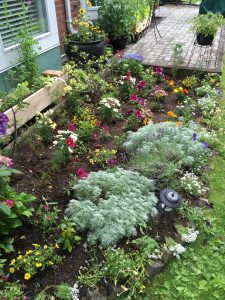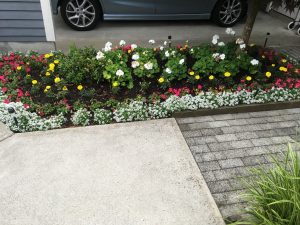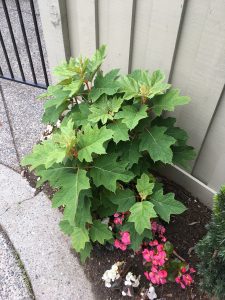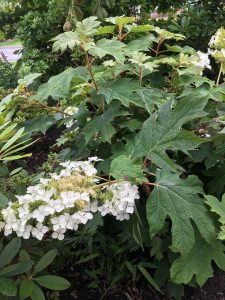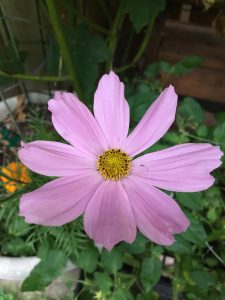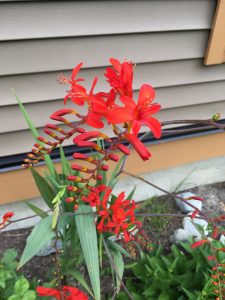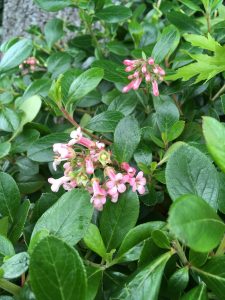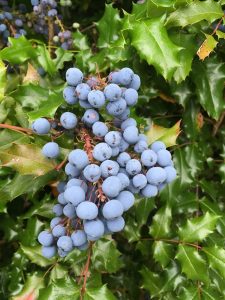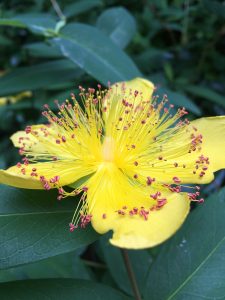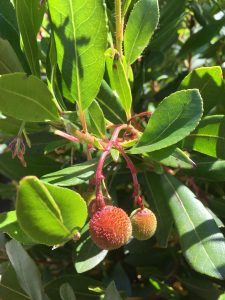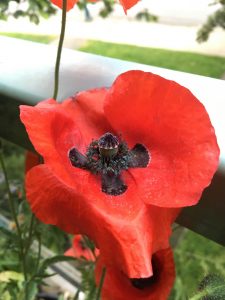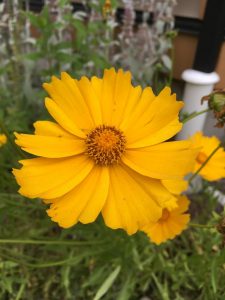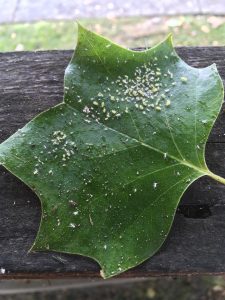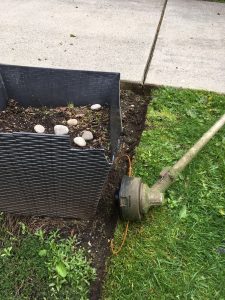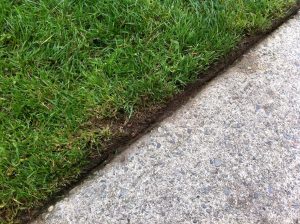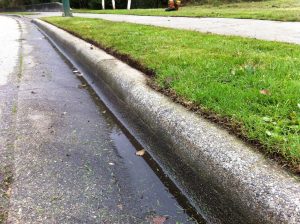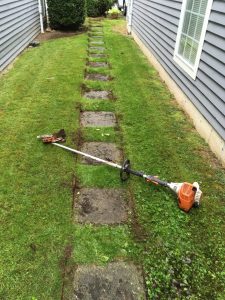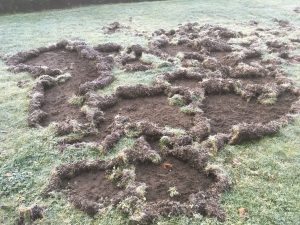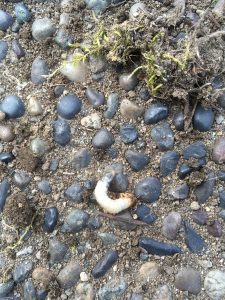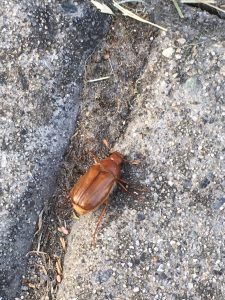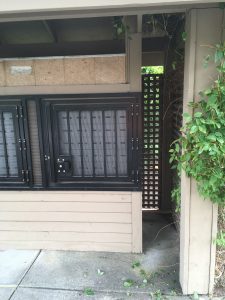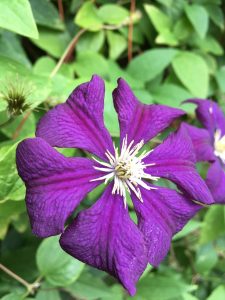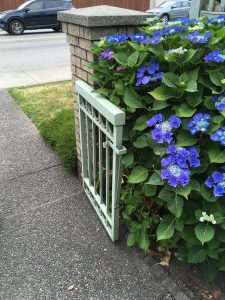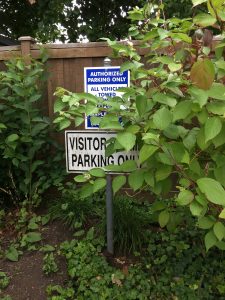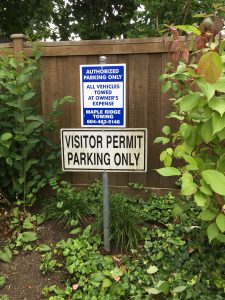June and July are prime pruning months in the landscape. As we hit mid-season, most trees and shrubs are happily outgrowing their spaces and they must be pruned back. If you missed the mid-season pruning start in your garden, you can still catch up. On large strata-multi-family-complexes, getting off to a slow start can be problematic.
This is why I was sent to do some pruning in bear country. The strata site I worked on gets frequent visits from a mother bear and her two cubs. Luckily, the noise we make with power shears keeps the hungry bears far away.
The pruning on this site was also slightly behind schedule. Take a look at the picture below and identify the problems.
This is a classic mid-season area full of targets.
- The Japanese maple (Acer palmatum) isn’t completely visible which bothers the residents.
- The roses are sending shoots right through the Viburnum davidii shrubs. I had to cut the roses down by hand with snips which was slow but necessary.
- All shrubs in the background require pruning.
- There are weeds in the bed edges.
- Trees have low hanging branches.
So, let’s grab sharp power shears, goggles and ear protection; and let’s get to work.
- The Japanese maple is now visible and the debris at its base is now gone.
- The Viburnum davidii also look better without rose spikes sticking out of them. Note that I don’t like to power shear Viburnum davidii because it inevitably shreds the stems. If you have time, hand snip out any obvious spikes without making holes in the shrubs. Rake out whatever leafy debris you can but don’t stress out. It’s hard to get everything from inside multi-stemmed shrubs.
- The rounded snowberry shrubs (Symphoricarpos albus) in the background are now under control.
- Weeds are now gone from the edges and the bed edges are cultivated. This makes a good impression on people walking by or parking their cars. Note that the main task for the day was pruning so we weeded only the worst areas. I think the split would be something like 85% pruning-15% weeding. This is where new landscape foremen can falter: it’s critical to get your mid-season pruning done. If the finesse work suffers for few weeks, so be it.
- My tree work was limited to obstruction: low branches covering shrubs or interfering with parked cars. Summer isn’t the best time to prune trees. Wait for the fall when the leaves are gone and the crown structure is nicely visible. But don’t be afraid to prune your trees if there are obstruction issues.
When you hit June on the West Coast you should be thinking about mid-season pruning. And if you aren’t, chances are your clients will remind you with their requests.




